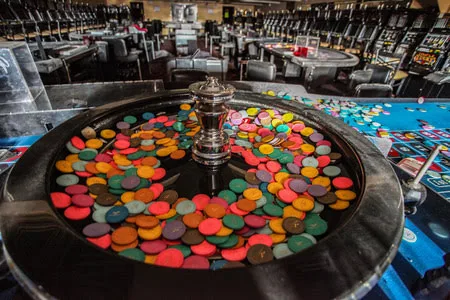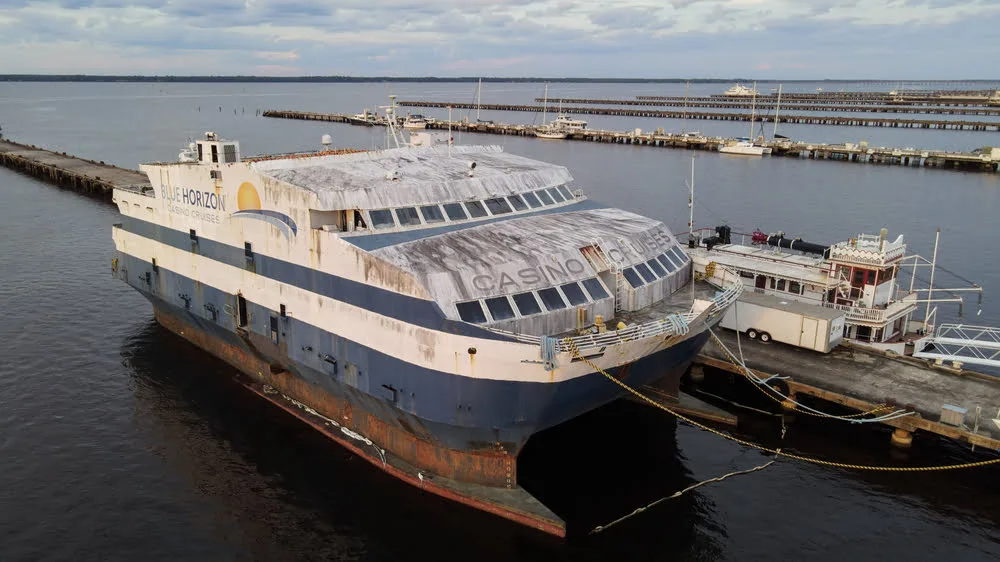
Casino Royale Abandoned Ship: A Ghost of Gambling’s Past
Once a beacon of luxury and excitement on the water, the Casino Royale ship now lies forgotten, rusting away with nothing but memories echoing through its deserted decks. Once bustling with players, the floating casino attracted gamblers from all over the world. But as time passed and fortunes turned, this once-thriving vessel faded into obscurity. What caused the fall of this maritime marvel? This article delves deep into the history, accidents, and current state of Casino Royale—a ship that symbolised opulence and now symbolises decay.
History of the Floating Casino Royale
Casino Royale was not just any ship—it was a floating casino designed to rival the glamour of Las Vegas. Launched in the early 1990s, it set sail with the goal of bringing high-stakes gaming to international waters, where gambling laws were more lenient. Built in Europe and refitted in Asia, the vessel featured multiple gaming floors, VIP lounges, fine dining areas, and live entertainment stages.
Its maiden voyages attracted gamblers and curious tourists alike. Casino Royale operated in regions like the Caribbean, Southeast Asia, and off the coast of Florida, strategically sailing in international waters to legally host games of chance that were restricted onshore. At its peak, it boasted over 500 slot machines, dozens of gaming tables, and a customer base of thousands each month.
Unlike land-based casinos, the ship offered a more intimate and exotic experience. Players could enjoy the sunset over the ocean while betting on roulette or poker. The exclusive nature of the cruises, often requiring reservations weeks in advance, made it a favourite among seasoned gamblers and high rollers.
In the early 2000s, however, legal challenges and financial difficulties began to surface. Several governments tightened regulations around offshore gambling, leading to route restrictions and increased taxation. These external pressures started to chip away at Casino Royale’s profitability.
Ownership disputes followed, and rumours of money laundering and operational mismanagement began to circulate. Media coverage became increasingly negative, affecting the casino’s reputation and bookings. As competitors modernised and diversified, Casino Royale struggled to keep up with changing technology and player preferences.
By 2010, the ship was sailing less frequently and struggling to maintain staffing and maintenance standards. Although still operational, its once-luxurious interiors were beginning to show signs of decline. Loyal customers noticed the difference, and new players simply chose more attractive alternatives.
The Beginning of the End
By the mid-2010s, attempts were made to revitalise the brand through marketing campaigns and minor renovations. However, the efforts were too late. The ageing infrastructure, combined with shifting industry dynamics, meant that Casino Royale was running out of steam—both literally and financially.
Accidents on the Casino Royale Ship
The downfall of Casino Royale wasn’t just a slow fade—it included a series of troubling accidents that accelerated its demise. In 2012, the ship experienced a significant engine failure while anchored off the coast of Panama. Hundreds of passengers were stranded for nearly 24 hours with limited access to electricity, water, and ventilation. The incident made headlines and damaged the vessel’s image irreparably.
A year later, another setback occurred when a fire broke out in the kitchen of one of the onboard restaurants. Though the crew managed to contain it quickly, the smoke damage to the nearby gaming floor was extensive. That particular floor was never fully reopened, and customers began to question the ship’s safety standards.
Security incidents also became more frequent. A 2014 altercation between two intoxicated patrons escalated into a full-blown brawl, resulting in injuries and property damage. While such events were not uncommon in land-based casinos, the confined environment of a ship made the situation more dangerous and alarming.

Maintenance issues worsened as the ship aged. In 2015, a partial power failure during a cruise led to widespread confusion and a complete shutdown of all electronic gaming systems. Players lost unsaved progress on digital slots and felt increasingly uneasy about returning.
The final blow came in 2016 when Casino Royale ran aground during a storm while attempting to dock at a minor port in the Philippines. The hull sustained major damage, and water flooded several lower compartments. Though no casualties were reported, the ship was officially decommissioned later that year, declared unfit for commercial use.
These repeated mishaps, both mechanical and operational, shattered the remaining trust players had in the brand. Investors pulled out, and what was once a floating empire of fortune became a stationary relic of a bygone era.
Post-Accident Investigations
Following the grounding, a series of investigations revealed poor maintenance records, staff shortages, and a lack of adherence to modern maritime safety protocols. Lawsuits followed, leading to financial penalties that further buried any hopes of revival.
Casino Royale Ship Today
Today, the once-glorious Casino Royale rests anchored in a forgotten shipyard in Southeast Asia. Its faded hull, broken windows, and graffiti-marked walls tell a silent story of past extravagance and present neglect. Locals refer to it as the “ghost ship,” and urban explorers occasionally sneak onboard to capture eerie images of the decaying casino floors and silent slot machines.
Despite occasional rumours of restoration or transformation into a museum, no concrete plans have been announced. The ship now serves as a cautionary tale within the gambling world—a reminder that even the most glamorous operations can fail without foresight, adaptability, and integrity.
For those who once sailed aboard Casino Royale, it remains a bittersweet memory: a floating paradise that promised luxury and excitement, but ultimately succumbed to the unforgiving tides of time and circumstance.
